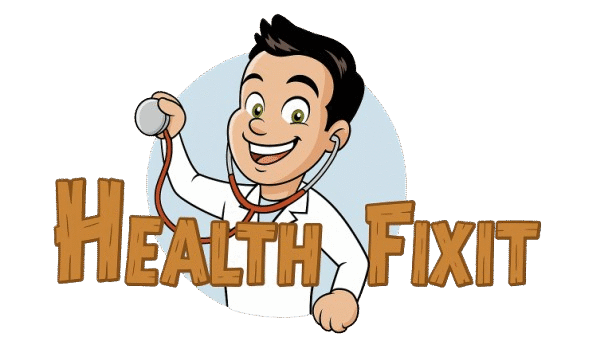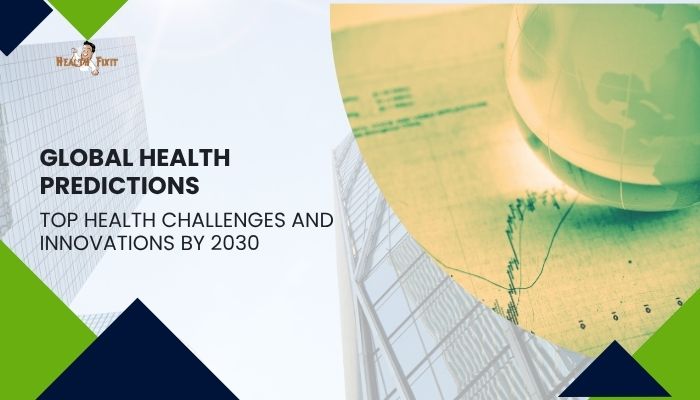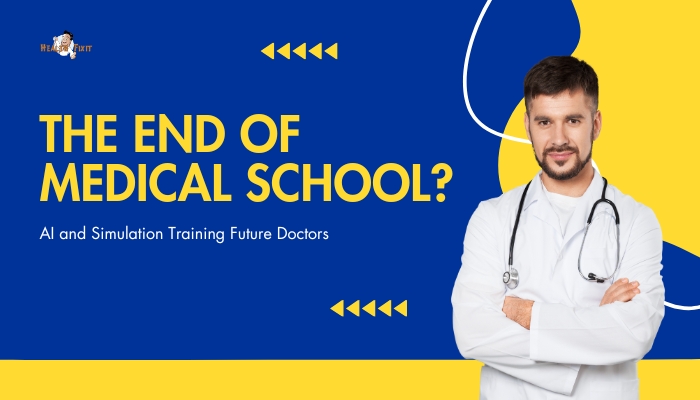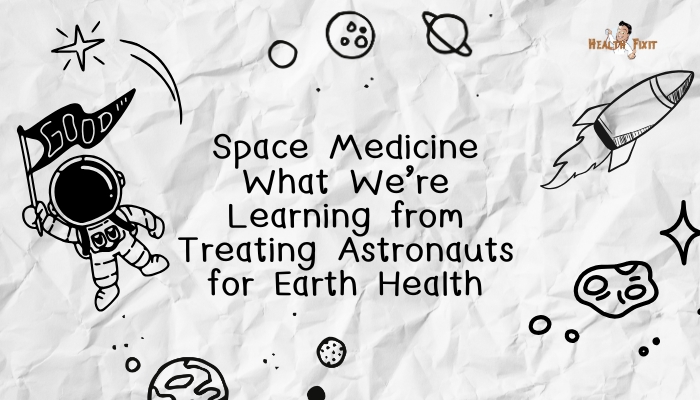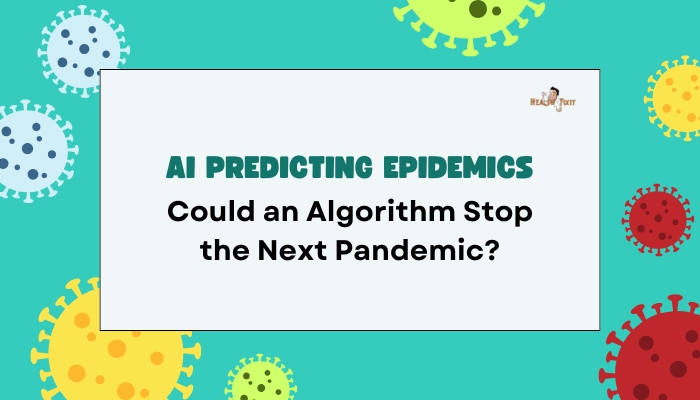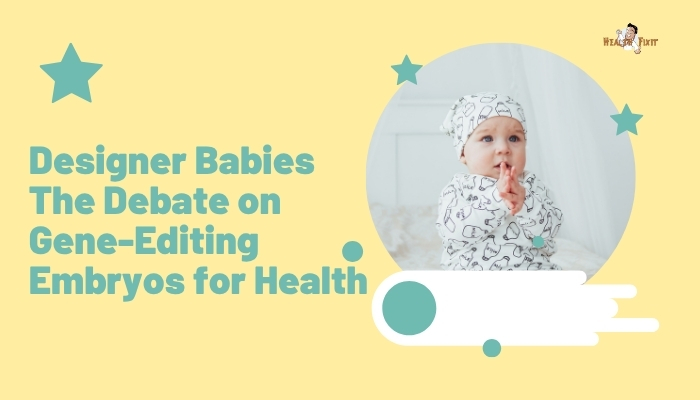Introduction
As we approach the end of this decade, global health stands at a pivotal moment. Rapid technological advances,
shifts in disease burden, climate impacts, and demographic transitions all converge, shaping the wellness landscape worldwide.
By 2030, experts predict surging chronic conditions, potential new pandemics, and dynamic breakthroughs in diagnostics and care.
This article surveys the top health challenges on the horizon and the cutting-edge innovations that might address them—from AI-driven precision medicine to climate-adaptive health systems.
1. Chronic Disease Overload
The Growing Burden
Globally, lifestyle-linked conditions—diabetes, cardiovascular disease, obesity—are skyrocketing, especially in rapidly urbanizing regions. These ailments strain healthcare systems as populations age, requiring more long-term management instead of acute interventions.
Innovations in Prevention and Management
- mHealth and Wearables: Continuous monitors for glucose, blood pressure, or activity feed AI-driven advice, personalizing daily habits.
- Genetic Screening: Identifying predispositions early fosters targeted prevention strategies.
- Food Policy Reforms: Governments increasingly implement sugar taxes or labeling laws to reduce junk food consumption, curbing the root causes of metabolic diseases.
2. Persistent Infectious Threats
Post-COVID Resilience
While the COVID-19 pandemic highlighted vulnerabilities, it also advanced vaccine technology (mRNA) and spurred global collaboration. Yet emerging zoonoses—potential new coronaviruses, hemorrhagic fevers—remain a looming risk.
AI-Empowered Outbreak Detection
Real-time data from wearable sensors, social media, or environmental trackers might flag unusual spikes in fevers or respiratory symptoms, letting public health officials respond rapidly. AI tools also accelerate vaccine or therapeutic discovery during new outbreaks.
Novel Therapies
Gene editing approaches in viruses or precise immunotherapies could be harnessed against lethal pathogens. Meanwhile, portable vaccine manufacturing (e.g., mRNA microfactories) might deliver region-specific prophylaxis on demand, a crucial step in rapid outbreak containment.
3. Mental Health: A Global Priority
Rising Demand
Depression, anxiety, and stress-related disorders are on the rise worldwide, exacerbated by pandemic aftermath, economic uncertainties, and social isolation. Mental health care expansions lag in many countries, especially rural zones.
Digital Mental Health Revolution
Telepsychiatry services, AI chatbots, and VR-based therapy can broaden access, bridging resource gaps. Wearable-based emotional analytics might prompt early interventions—like digital coaching or tele-counseling—before crises escalate.
Destigmatization Efforts
Societal acceptance, workplace policies, and government campaigns aim to integrate mental wellness into standard health coverage. By 2030, many predict mental health parity in insurance, fostering earlier, routine mental health checks like standard physicals.
4. Climate Change and Health
Climate-Driven Disease
Rising temperatures expand vector-borne illnesses—like malaria, dengue—into new latitudes. Air pollution intensifies respiratory ailments. Extreme weather events disrupt health systems, hitting vulnerable populations hardest.
Adaptive Healthcare Infrastructure
- Green Hospitals: Energy-efficient structures, solar backups, and robust telemedicine networks to handle climate disruptions.
- Weather-Integrated Early Warnings: Tools that combine meteorological data with disease surveillance, guiding vaccine stockpiles or mosquito control in threatened areas.
- Climate-Conscious Policies: By 2030, many health ministries may factor climate resilience into public health planning—from cooling centers during heatwaves to advanced water management preventing cholera outbreaks.
5. The Age of Personalized Medicine
Genomics and Multi-Omics
Routine genomic screening, combined with proteomics or microbiome data, enables precision prescriptions—tailoring therapies (like cancer treatments or cholesterol meds) to each patient’s genetic profile, maximizing efficacy and minimizing side effects.
CRISPR Therapies Expand
Beyond rare genetic diseases, gene editing might address broader conditions like high cholesterol or certain immunodeficiencies. Ethical oversight and pricing remain pivotal concerns, but accessible “one-time cures” may become more common.
Data-Driven Healthcare Ecosystems
As EHR systems integrate genomic insights, doctors rely on advanced decision-support tools, flagging personalized drug regimens or lifestyle interventions. This synergy reduces trial-and-error in medication, boosting success rates and patient satisfaction.
6. Health Equity and Universal Coverage
Bridging Resource Gaps
Emerging technologies—telemedicine, AI triage, micro-labs—can leapfrog deficits in physical infrastructure for low-income regions
. Yet upfront cost, connectivity, and staff training remain barriers. The global push for universal health coverage seeks to incorporate such innovations in an equitable manner.
Collaborative Funding and Partnerships
Public-private alliances, philanthropic grants, or local manufacturing of diagnostics (like microfactories) might ensure critical medicines and vaccines reach remote communities. This approach fosters resiliency against the next pandemic, but requires robust governance.
Digital Literacy
Widespread adoption of eHealth solutions demands digital literacy. Governments and NGOs invest in community-based training—ensuring that populations can engage with telehealth apps, wearable data, or genetic test results responsibly.
7. The AI Frontier in Healthcare
Virtual Nurse Assistants
We’re seeing prototypes of AI-based nurse bots or chatbots that triage patient queries, track vitals, and reduce medical staff burnout. By 2030, advanced AI “assistants” could handle routine tasks, free clinicians for complex or empathic patient care.
Predictive Analytics for Prevention
Aggregating patient data from wearables, EHRs, and lifestyle apps, AI might spot risk patterns, prompting timely interventions—like adjusting medication after subtle changes in heart rate variability or sleep patterns.
Personalized Behavioral Nudges
Beyond raw data, AI might refine behavior change solutions, sending daily micro “nudges” to encourage physical activity, stress reduction, or medication adherence. By 2030, such supportive AI might become standard in chronic disease management.
Conclusion
As we look toward 2030, global health contends with both longstanding issues (chronic diseases, infectious threats) and new frontiers (climate resilience
, precision genomics, AI-driven care). Technological innovations—spearheaded by gene editing, real-time analytics, or micro-manufacturing—promise breakthroughs that could redefine health outcomes worldwide
. Yet bridging socioeconomic divides, ensuring robust ethical frameworks, and building local capacity remain pivotal to harness these solutions for all. If we navigate these challenges collaboratively,
the next decade may well usher in a more equitable, proactive, and patient-focused era of healthcare—fulfilling the promise of “health for all.”
References
- World Health Organization. World Health Statistics 2021: Monitoring Health for the SDGs. WHO; 2021.
- Lancet Commission on the Future of Health. Global health 2030: building universal health coverage. Lancet. 2020;395(10224):768–800.
- GBD 2030 Collaboration. Projecting global disease burden by 2030. Lancet Glob Health. 2019;7(1):e118–e128.
- von Euler-Chelpin M, et al. The rise of AI in healthcare: potential global transformations. Nat Med. 2021;27(2):143–148.
- Ezzati M, Boulle P. Chronic diseases in the developing world: dimensions, trends, and projections. Int J Epidemiol. 2020;49(3):635–647.
- Gates B, Gates M. The next outbreak? We’re not ready. TED Talk. 2015.
- Li C, Freedman N, Quan L, et al. Climate change and emerging infectious diseases. Annu Rev Virol. 2021;8(1):123–141.
- Crisp LN, Chen L. After COVID-19: reimagining global health through telemedicine and synergy. BMJ Glob Health. 2021;6(1):e004437.
- United Nations. Decade of Healthy Ageing 2020–2030 initiative. UN; 2020.
- Riahi K, et al. The intersection of climate adaptation and global health goals. Glob Environ Change. 2022;72:102430.
